Diet-Related Colic: When to Suspect It and What to Do
Please note that the following should be seen as general information about colic in relation to diet. For specific advice, ...
Read MoreImportant notice to customers — product packaging changesLearn More
NEW FOOD PACKAGING IN STORE NOW
From August 2018, customers will notice our rebranded food packaging start to appear on shelf in all major stockists.
 CURRENT Packaging
CURRENT Packaging

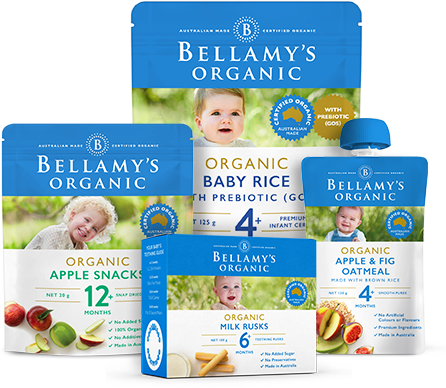 new Packaging
new Packaging
We are excited to announce our new packaging will start to appear on shelf from August 2018. This transition to new packaging will occur over a number of months. During this time there will be a mix of current and new packaging on shelf.
There are no major changes to these products, in some instances there is a small name change or slight recipe improvement, see below for the full details.
Products purchased via the website will be delivered to customers in our old packaging until the end of October. From November, products ordered from the website will be delivered in the new packaging.
Please note, our Infant Formula packaging will not be rebranded until later in 2019.
For any questions, connect with our team of accredited practising Dietitians on +61 3 6332 9200
Product name changes
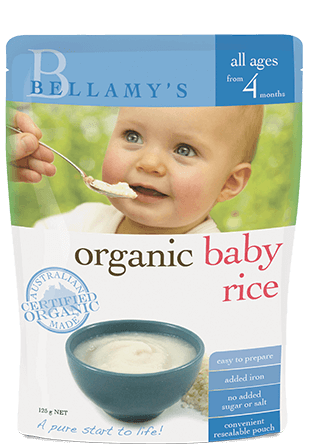 CURRENT Packaging
Organic Baby Rice
CURRENT Packaging
Organic Baby Rice

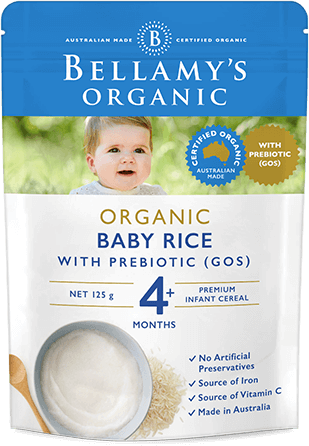 NEW Packaging
Organic Rice with Prebiotic (GOS)
Note: Our Baby Rice recipe has been upgraded to now include GOS Prebiotic
NEW Packaging
Organic Rice with Prebiotic (GOS)
Note: Our Baby Rice recipe has been upgraded to now include GOS Prebiotic
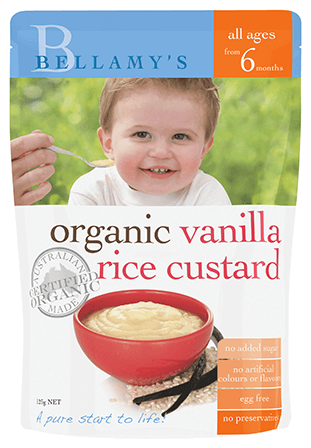 CURRENT Packaging
Organic Vanilla Rice Custard
CURRENT Packaging
Organic Vanilla Rice Custard

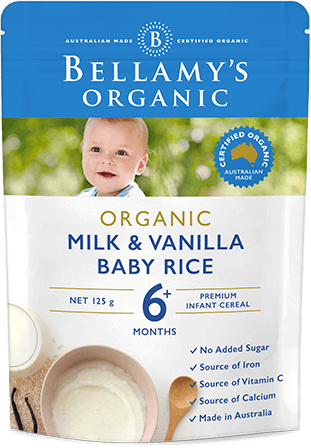 NEW Packaging
Organic Milk & Vanilla Baby Rice
NEW Packaging
Organic Milk & Vanilla Baby Rice
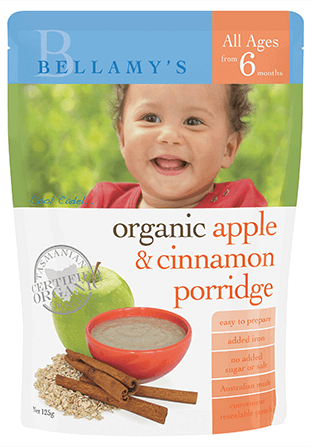 CURRENT Packaging
Organic Apple & Cinnamon Porridge
CURRENT Packaging
Organic Apple & Cinnamon Porridge

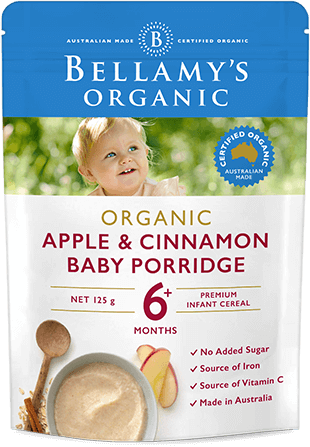 NEW Packaging
Organic Apple & Cinnamon Baby Porridge
NEW Packaging
Organic Apple & Cinnamon Baby Porridge
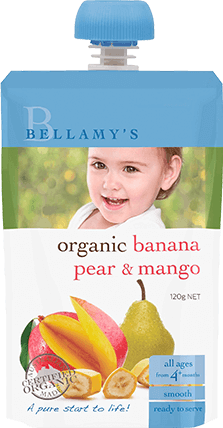 CURRENT Packaging
Organic Banana, Pear & Mango
CURRENT Packaging
Organic Banana, Pear & Mango

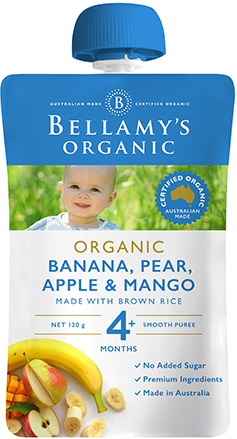 New Packaging
Organic Banana, Pear, Apple & Mango
New Packaging
Organic Banana, Pear, Apple & Mango
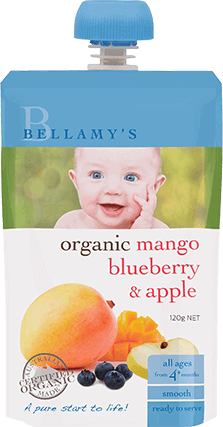 CURRENT Packaging
Organic Mango, Blueberry & Apple
CURRENT Packaging
Organic Mango, Blueberry & Apple

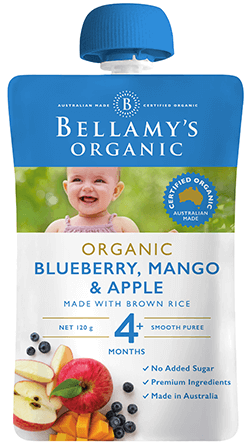 New Packaging
Organic Blueberry, Mango & Apple
New Packaging
Organic Blueberry, Mango & Apple
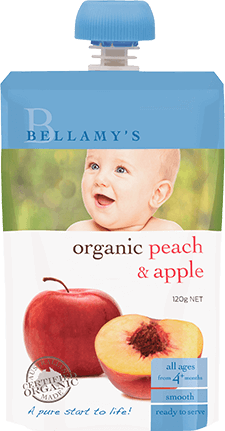 CURRENT Packaging
Organic Peach & Apple
CURRENT Packaging
Organic Peach & Apple

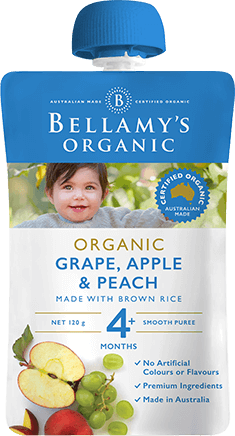 New Packaging
Organic Grape, Apple & Peach
New Packaging
Organic Grape, Apple & Peach
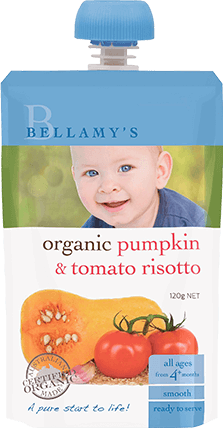 CURRENT Packaging
Organic Pumpkin & Tomato Risotto
CURRENT Packaging
Organic Pumpkin & Tomato Risotto

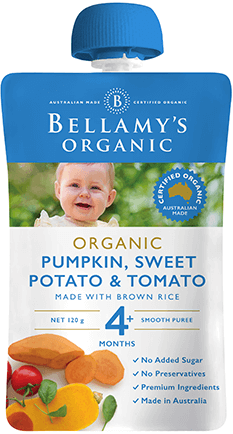 New Packaging
Organic Pumpkin, Sweet Potato & Tomato
New Packaging
Organic Pumpkin, Sweet Potato & Tomato
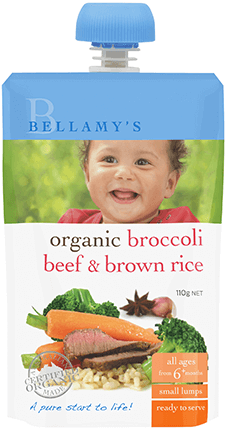 CURRENT Packaging
Organic Broccoli, Beef & Brown Rice
CURRENT Packaging
Organic Broccoli, Beef & Brown Rice

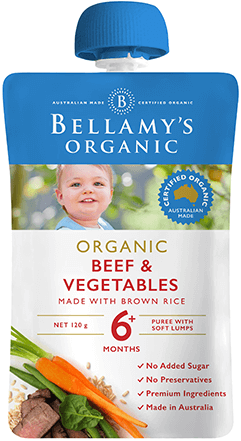 New Packaging
Organic Beef & Vegetables
New Packaging
Organic Beef & Vegetables
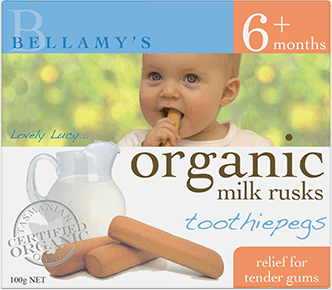 CURRENT Packaging
Organic Milk Rusks Toothiepegs
CURRENT Packaging
Organic Milk Rusks Toothiepegs

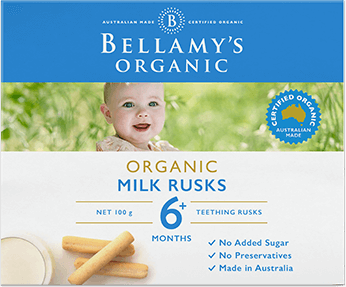 New Packaging
Organic Milk Rusks
New Packaging
Organic Milk Rusks
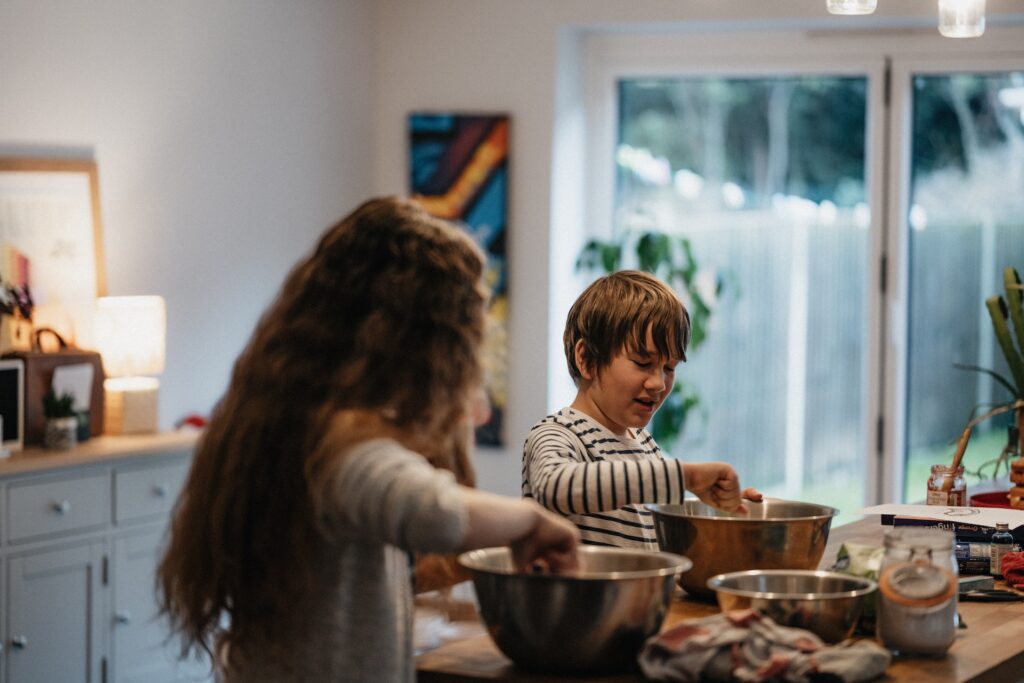
At present, the only treatment for coeliac disease is a lifelong gluten-free diet. The diet should commence immediately following confirmation of the diagnosis. It’s essential to learn how to get started, how to interpret a food label, and know which nutrients may be of more concern now the diet is gluten-free for life. It is recommended that you seek input from a dietitian with expertise in this area. If your child is still breastfed, there is no need to take gluten from your own diet.
For a product to be called gluten-free in Australia, it must not contain oats, malt, or any ingredients derived from them. The final product must also have no detectable gluten. The minimum detectable level currently is <0.0003%. The current food standards require the manufacturer to label the ingredients that have been derived from a gluten-containing grain or indicate the presence of gluten ingredients in the product. Some ingredients from wheat are so refined they contain no detectable gluten and are allowed to be consumed. Your dietitian can help explain this.
Coeliac Australia produces an Ingredient List Booklet with Phone App, which lists more than 800 ingredients and 300 additives used in Australia and indicates whether they are safe for inclusion in a gluten-free diet. This gives you instantaneous information about ingredients when out shopping. Tools like these can be a great help and the book is included in your start-up pack when you become a member of Coeliac Australia.
Managing a gluten-free diet
There’s no denying that managing a gluten-free diet can be challenging. It can be especially challenging for children, as they are continually surrounded by gluten on the playground, at daycare, at friend’s homes and at birthday parties. Your child will need to have a full understanding of why they are on a special diet, as you cannot be with them 24/7.
At the very least, train your child to avoid obvious gluten in foods such as:
There is a large range of gluten-free breakfast cereals on the market and even gluten-free bagels, muffins and croissants join the GF bread range that is now available.
In modern times we have come to think of a snack as processed food from a packet. Let’s bring back grabbing a piece of fresh fruit or vegetable as a fast snack food. They are pre-packaged and ready to go! These contribute infinitely more nutrients to the diet than a processed packaged snack can. The quality of some GF snack foods is improving though as more food production companies move into the gluten-free market. Many packaged GF ‘bars’ on offer contain nuts, which can be tricky at most daycare centres and schools.
Try these easy gluten-free snack ideas:
Below are some suggestions for lunches or dinners. If you prepare a little more at night than you need, the extra meat or vegetables can be incorporated into lunch the next day.
Gluten Contamination
Small, continuous background amounts of gluten from contamination can be enough to damage the intestinal lining, therefore it’s essential that care be taken in the kitchen to reduce cross-contamination with gluten.
To help reduce the risk of gluten contamination:
Recovery:
Once your child is on a GF diet, the damage to their small bowel will start to heal. As they may have low levels of some vitamins and minerals at diagnosis, sometimes your doctor will suggest that your child have some extra supplements for a short while. If gut symptoms continue, they may also suggest a low lactose diet while your child’s bowel recovers. This is because the lactase enzyme sits on the end of villi that have been damaged. The loss of the enzyme from bowel damage means your child may not break down milk sugar very well until the villi recover, and the enzymes are restored. If you go lactose-free too, remember to try dairy products every few months to test when your child can again consume regular milk products.
If left untreated and unmanaged, the long-term consequences of coeliac disease are related to chronic systemic inflammation, poor nutrition and malabsorption of nutrients. Complications ranging from iron deficiency to fertility issues in females to osteoporosis to gut-related cancers may develop. Coeliac disease is becoming better understood, awareness is growing and there are lots of food options available today to support gluten-free eating.
REFERENCES: